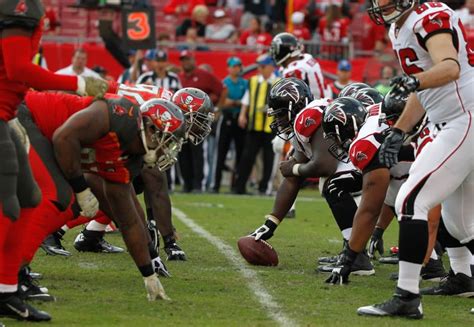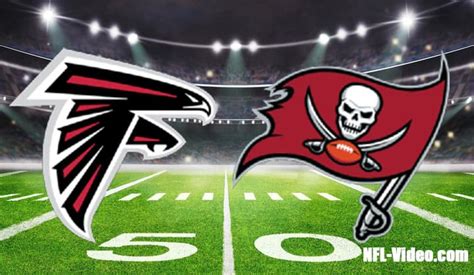Explore the Tampa Bay Buccaneers’ defensive strategies, key players, halftime adjustments, and their impact against the Falcons in this insightful analysis.In the fiercely competitive landscape of the NFL, defensive tactics can often be the deciding factor between victory and defeat. As the Tampa Bay Buccaneers prepare to take on the Atlanta Falcons, their strategic defensive maneuvers become critical in thwarting a formidable opponent. This article delves into the Buccaneers’ defensive philosophy, highlighting key players who deliver standout performances, and offering insights into their zone defense strategies. We’ll also explore the adjustments made at halftime to adapt to Atlanta’s dynamic offense and evaluate the overall effectiveness of Tampa Bay’s defensive game plan. Whether you’re a die-hard fan or a curious observer, join us as we dissect the Buccaneers’ defense and its pivotal role in this exciting matchup.
Understanding The Tampa Bay Buccaneers’ Defensive Philosophy
The Tampa Bay Buccaneers are known for their strategic and aggressive approach to defense, which is a cornerstone of their overall team philosophy. At its core, the Buccaneers’ defensive strategy revolves around several key principles that aim to stifle their opponents’ offensive capabilities.
One of the primary tenets of the Buccaneers’ defense is what is often referred to as bend but don’t break. This philosophy emphasizes being resilient against big plays by allowing some yards between the 20s while tightening up in the red zone. By doing so, the Tampa Bay defense forces teams into challenging situations, making it more difficult to score touchdowns.
Another significant aspect is the emphasis on versatility. The Buccaneers prioritize players who can adapt to various defensive schemes, allowing for dynamic responses to offensive formations. This versatility is particularly effective against teams like the Atlanta Falcons, who utilize a combination of speedy receivers and a strong running game.
In terms of scheme, the Buccaneers often employ a mixture of zone and man-to-man coverage, selectively deploying each based on the offensive threats presented. This adaptability is instrumental in disrupting the timing between quarterbacks and receivers, especially against fast-paced offenses.
| Key Principles of Tampa Bay’s Defense | Description |
|---|---|
| Bend but Don’t Break | Allow yards but tighten up in the red zone. |
| Versatility | Players adapt to various defensive schemes. |
| Hybrid Coverage | Mix of zone and man-to-man coverage based on threats. |
Overall, the defensive philosophy of the Tampa Bay Buccaneers relies on disciplined execution, adaptability, and a focus on preventing scoring opportunities. This tactical approach has proven effective against various opponents, including the Atlanta Falcons, showcasing their ability to adjust and respond in critical game situations.
Key Defensive Players Making An Impact Against The Falcons
The success of the Tampa Bay Buccaneers’ defensive strategies often hinges on the individual contributions of standout players. These key defensive players not only execute their roles effectively but also elevate the overall performance of the team against formidable opponents like the Atlanta Falcons.
| Player | Position | Key Statistics | Impact Against Falcons |
|---|---|---|---|
| Lavonte David | Linebacker | 85 tackles, 3 sacks | Leads in tackles and provides strong coverage |
| Shaquil Barrett | Outside Linebacker | 7 sacks, 12 QB hits | Consistent pressure on the quarterback |
| Antoine Winfield Jr. | Safety | 2 interceptions, 10 passes defended | Game-changing plays in critical moments |
| Vita Vea | Defensive Tackle | 41 tackles, 4 sacks | Domination in the trenches, disrupting runs |
Each of these players showcases the depth and talent within the Tampa Bay defense. For instance, Lavonte David’s ability to read the game allows him to make crucial tackles, while Shaquil Barrett’s speed often leads to pivotal sacks that can shift momentum. Antoine Winfield Jr. plays a transformative role in the secondary, and Vita Vea’s prowess in stopping the run is indispensable for containing the Falcons’ offensive threats.
As these defensive stalwarts continue to shine, their collective efforts solidify the Tampa Bay Buccaneers’ reputation as a formidable defensive unit, critical in their matchups against high-powered offenses like that of the Atlanta Falcons.
Tampa Bay’s Zone Defense Strategies Explained
The Tampa Bay Buccaneers are well-known for their effective zone defense strategies, which play a crucial role in their overall defensive game plan, particularly against high-caliber teams like the Atlanta Falcons. Zone defense allows players to cover specific areas of the field rather than focusing solely on individual opponents, which can lead to more opportunities for interceptions and forced turnovers.
One of the primary strategies employed by the Tampa Bay defense is the use of zone coverage schemes that change based on the offensive formation and player movements of the opposing team. This adaptability is essential when facing the dynamic and versatile offensive attack of the Falcons.
Key elements of the Tampa Bay zone defense include:
- Cover 2 Defense: This strategy involves two safeties covering the deep halves of the field, while the cornerbacks and linebackers take responsibility for underneath routes. This alignment allows for solid deep coverage and limits big plays.
- Cover 3 Defense: In this setup, one safety covers the deep center of the field while the two cornerbacks handle the outside deep zones. This provides a balanced defense against both short passes and deep threats, which is critical against a pass-heavy team.
- Matchup Zone: This approach combines man-to-man principles with zone coverage, allowing defenders to initially cover their assigned zones but switch to man coverage when an opponent enters their area. This is effective against teams that utilize motion and varied route combinations.
Additionally, the Tampa Bay coaching staff emphasizes communication among players to ensure that everyone understands their responsibilities in the zone, especially when facing complex formations from the Falcons. This cohesiveness can disrupt the timing of Atlanta’s passing game, leading to fewer successful completions.
Overall, the strategic implementation of these zone defense tactics not only strengthens the Tampa Bay Buccaneers’ defense but also positions them favorably during critical game situations against their rivals, including the Atlanta Falcons.
Adjustments Tampa Bay Makes At Halftime To Counter Atlanta
Halftime is crucial for any NFL team, as it provides an opportunity to re-evaluate strategies and make necessary adjustments. The Tampa Bay Buccaneers are known for their proactive approach when facing the Atlanta Falcons. Here are some key adjustments the team often employs:
Through these strategic adjustments, the Tampa Bay Buccaneers enhance their chances of neutralizing the Atlanta Falcons’ offensive threats and ultimately aim to control the game’s outcome in the second half.
Measuring The Success Of Tampa Bay’s Defensive Tactics
Determining the effectiveness of the Tampa Bay Buccaneers’ defensive tactics involves a multi-faceted approach. Key performance indicators (KPIs) such as yards allowed, turnover differentials, and third-down efficiency provide a solid framework for assessment.
| Statistical Category | 2019 Buccaneers | 2020 Buccaneers
Frequently Asked QuestionsWhat are the key defensive strategies employed by the Tampa Bay Buccaneers against the Atlanta Falcons? The Buccaneers focus on a mix of zone and man-to-man coverage, capitalizing on their defensive line’s ability to pressure the quarterback and limit the Falcons’ passing game. How does the Buccaneers’ pass rush impact their overall defensive performance? A strong pass rush creates hurried throws from the Falcons’ quarterback, leading to potential turnovers and limiting the effectiveness of their passing plays. What role does linebacker Devin White play in the Buccaneers’ defense? Devin White is crucial as he allows the Buccaneers to maintain flexibility, effectively defending both the run and the pass while also being a key player in blitz schemes. How do the Buccaneers handle the Falcons’ running game? The Buccaneers utilize a disciplined approach, ensuring that their defensive linemen maintain their gaps to stop running back plays and minimize yardage gained on the ground. What adjustments does the Buccaneers’ defense typically make during a game against the Falcons? They often adjust their coverage schemes and defensive line alignments based on the offensive formations of the Falcons, aiming to exploit mismatches and disrupt their rhythm. How important is player communication in the Buccaneers’ defensive scheme? Player communication is vital, as it ensures all defenders are aware of their responsibilities, particularly against an elusive quarterback like the Falcons’ signal-caller. What lessons can other teams learn from the Buccaneers’ defensive approach against the Falcons? Other teams can learn the importance of versatility in defensive schemes, the effectiveness of a strong pass rush, and the need for constant communication to adapt to in-game situations. |
|---|






